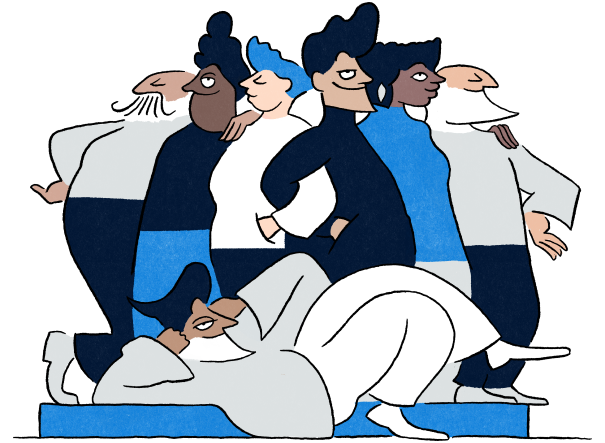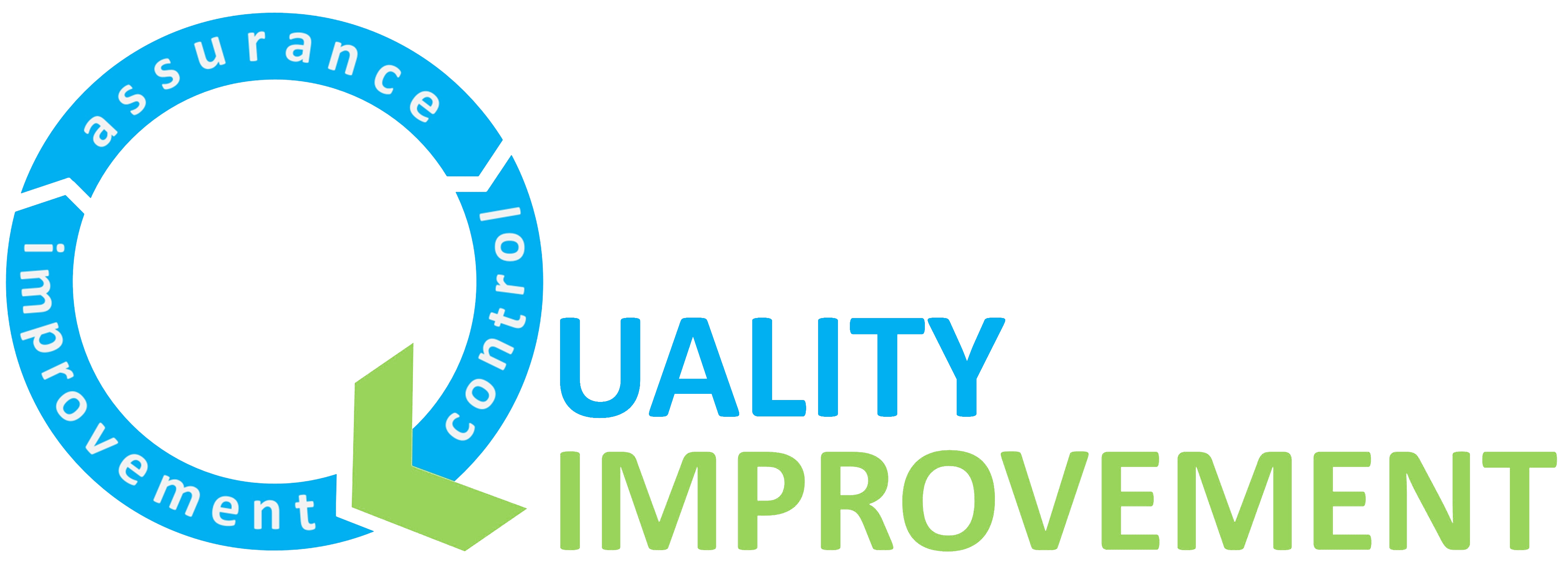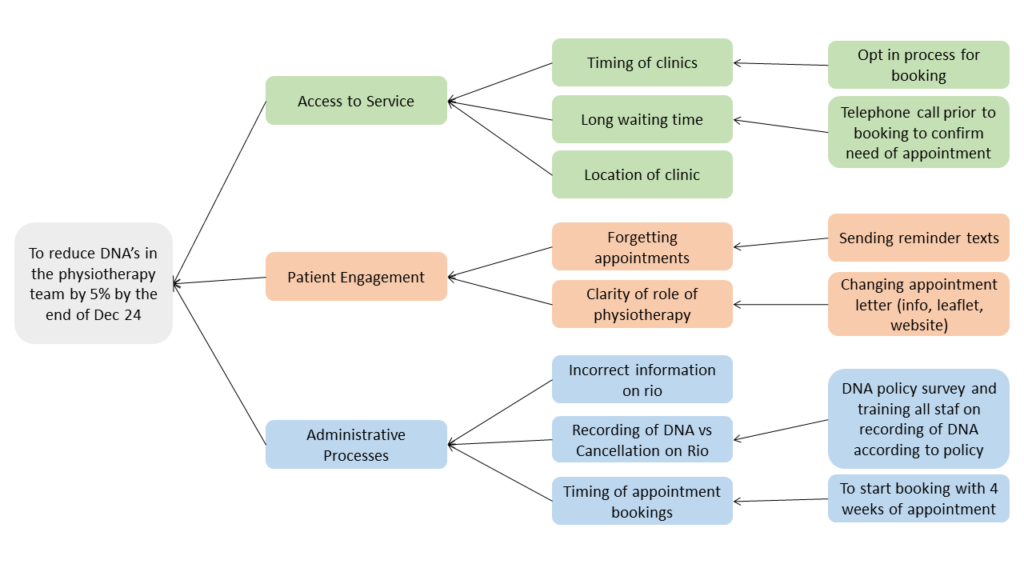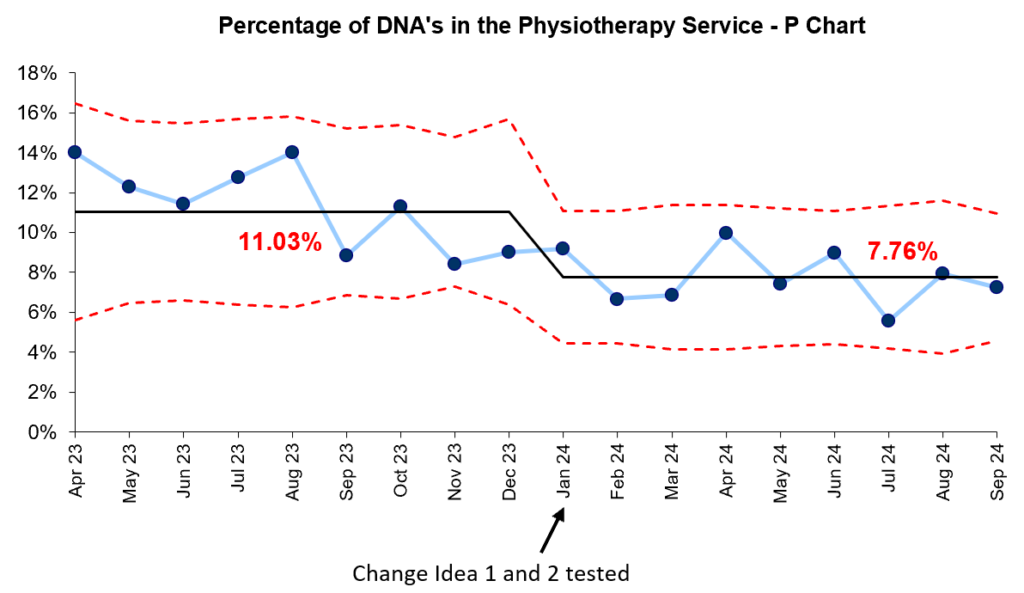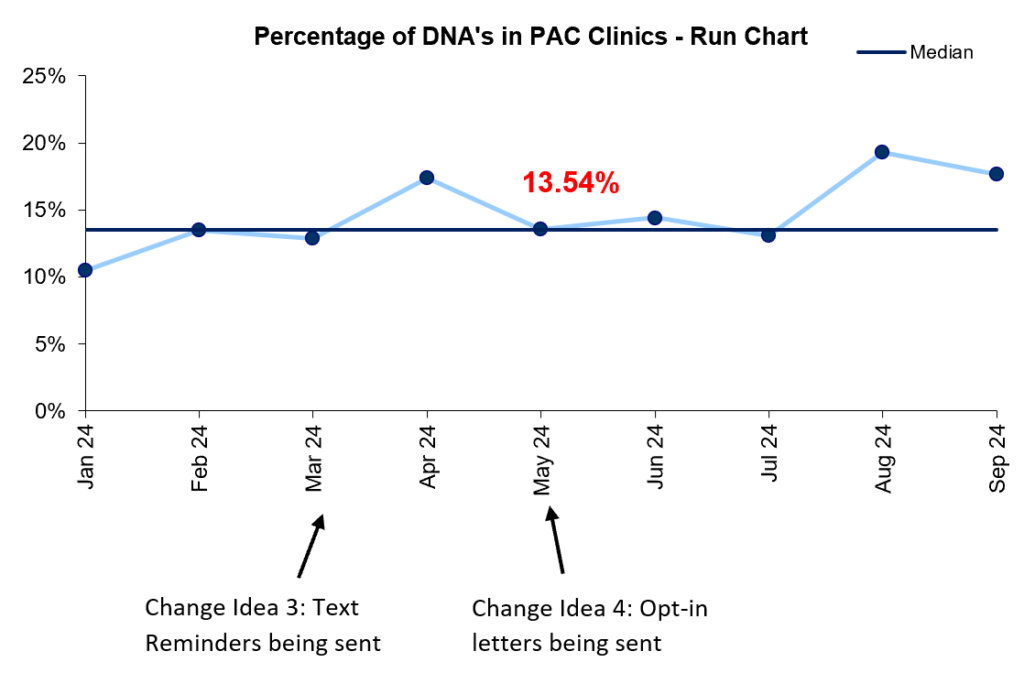
Reducing Missed Appointments in Newham Children’s Physiotherapy Service
8th November 2024
By Rufus Lufer (Highly Specialist Children’s Physiotherapist)
Starting Point:
Our team provides physiotherapy to children and young people in the borough of Newham. We noticed that the percentage of missed appointments (DNAs) in the service was quite high, averaging around 12% around April to August 23. This was a complex issue, especially considering the diverse population we work with in Newham, so we decided to start a QI project to tackle the problem together.
Aim of the project:
Our aim was to reduce the percentage of missed appointments (DNA) in the children’s physiotherapy team in Newham by 5% by the end of Dec 24.
Team formation:
We formed as a team in Dec 23, as part of the Improvement Leaders Program with me (Rufus) as the project lead, another Band 5 staff member Alex, a member from our admin team, Ricky and our coach Matthew and our sponsor Marion.
Understanding the problem:
Service user involvement small ‘I’:
A focus group of SCYP service users were recruited by liaising with the people participation lead for our area, Rachel. During the focus group, we gained valuable understanding of the problem which would lead us to form our driver diagram.
Staff involvement:
During our away day we collected valuable insights from the physiotherapy team in order to further help our understanding of the problem. Again this informed our driver diagram as a team.
Driver Diagram:
We as a team got together and put together our data and the information that we gained from the focus group with service users and staff and came up with our driver diagram and change ideas (see figure below)
We were able to come up with our theory of change and a few change ideas that we could start to test as a team.
Change Idea 1: DNA Policy survey and training of Staff
We completed a DNA policy survey of our team and we found that we as a team were not clear on what constituted a DNA and what was a cancellation. Different team members were recording different aspects differently which was affecting our results. Therefore, the first step was to run a training for all physio team members using the recently updated ‘SCYPS DNA policy’ document to ensure that we are recording the data correctly. This was completed in January 2024.
Change Idea 2: Earlier booking of appointments
At the same time our admin team decided to test a change of trying to book our appointments 3-4 weeks in advance so that SU have enough time to cancel if required.
PDSA 1: Testing of both change ideas.
Unfortunately we were not able to stagger both as they just happen to coincide, so we ended up testing both ideas at the same time.
Please see graph below for results:
Results:
We found that both these change ideas seemed to have an effect on the DNA rate in shifting the data set lower over time. We have reduced the percentage of DNAs from 11% to 7.7%.
Change Idea 3: Text reminders
Our admin started booking our PAC clinic under a separate clinic in RiO setup with IT which meant patients would get reminder texts one day prior to their appointments to see if this would reduce our DNA in our PAC clinics which were higher than other pathways (see graph below)
Note: This data is only separately available from Jan-24 due to pathway being added only then
Change idea 4: Opt in clinic letters
We drafted opt in letters and sent them to our families on this pathway, hoping that if they opt in and choose an appropriate time for the appointment that this might reduce our DNAs within the PAC clinic pathway.
Results:
As you can see there is no clear change in the data post the testing of these two change ideas in the PAC clinics. However, our admin team found that sending them and organising them this way was a lot easier compared to how we were doing it before and have changed this process internally, as they found it reduced the time it took for them to organise these appointments or was the same.
Next Steps:
This is an ongoing project, and for our next steps we will further explore equity of access to the service, by looking at our data to see which groups are underrepresented in our service. Also, our service leaflets are now available in different languages so we would like to explore the impact of this on different population groups accessing the service.
Project Team: Rufus Luther, Alex Zacharias, Ricky Anderson, Marion Levine
Most Read Stories
-
Why is Quality Control important?
18th July 2018
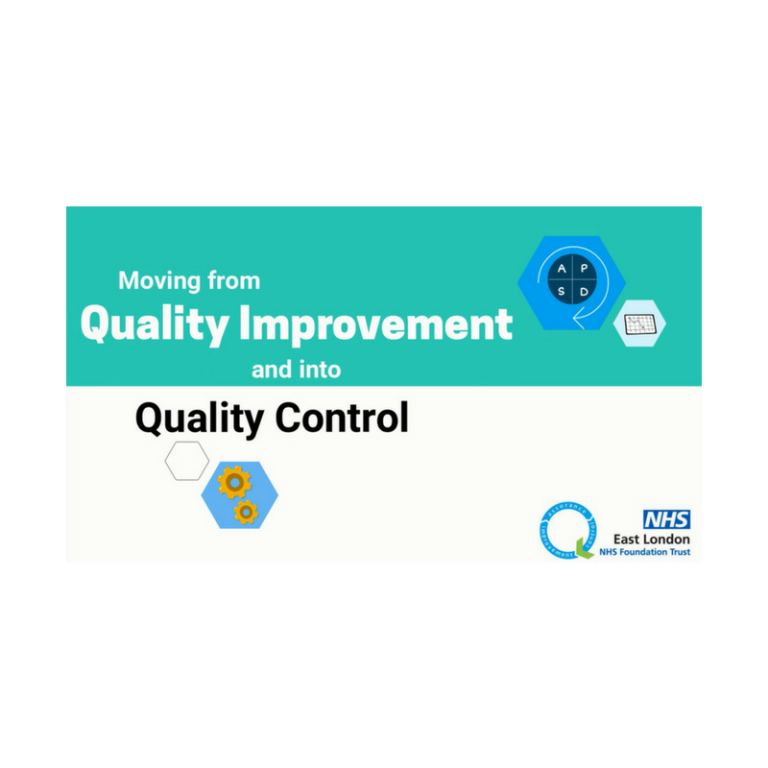
-
An Illustrated Guide to Quality Improvement
20th May 2019
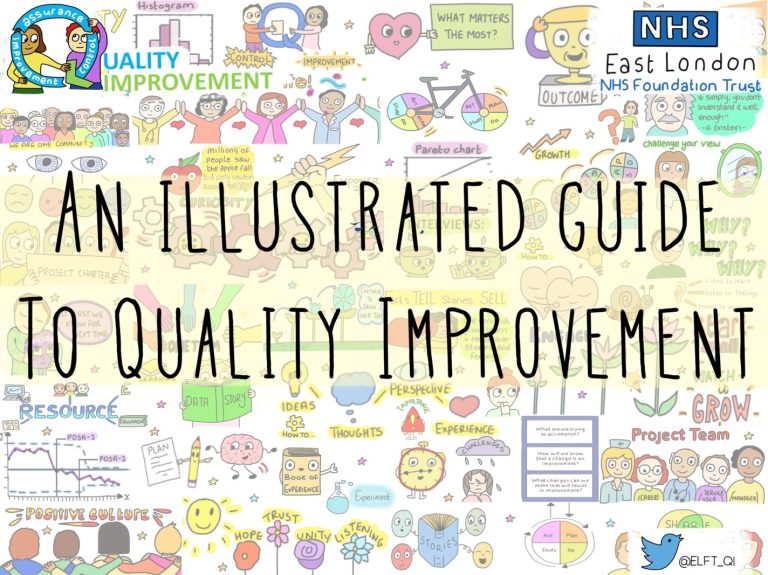
-
2016 QI Conference Poster Presentations
22nd March 2016
-
Recognising Racism: Using QI to Help Take Action
21st January 2021
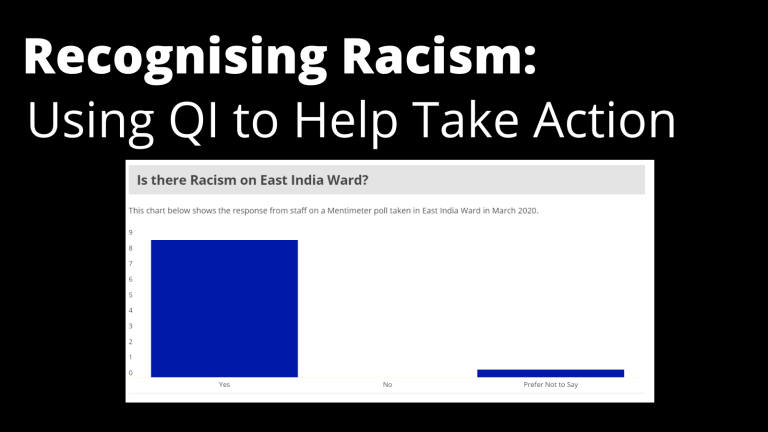
-
Using data enabled us to understand our problem
31st March 2023
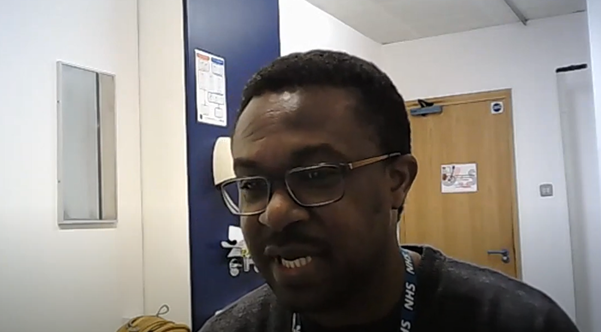
-
QI Essentials: What does a Chief Quality Officer do?
18th March 2019

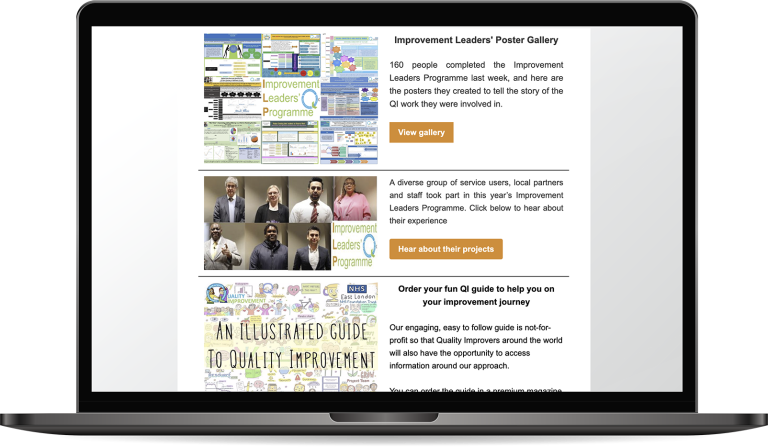
Follow QI on social media
To keep up to date on the latest concerning QI at ELFT, follow us on our socials.
